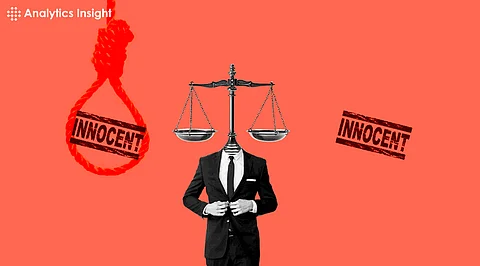

AI tools in courtrooms can speed up decisions but risk unfair rulings due to built-in bias.
Lack of transparency in AI models can lead to wrongful convictions or unfair sentencing.
Human oversight remains crucial to ensure that justice is truly served.
Artificial intelligence is making its way into courtrooms globally, with many courts leveraging AI tools to support judges in decision-making. While these tools aim to assist with tasks like sentence recommendations and risk assessment, the reality is more complex.
AI lacks understanding of human emotions, behavior, and context, relying solely on data that can be flawed or biased, leading to potentially unfair outcomes. This raises important questions about the role of AI in the justice system.
Algorithm bias is a major concern as AI learns from records. If past data is incorrect, AI reflects that. For instance, the US used the COMPAS system to assess whether a person might reoffend. As per the research, there was double the likelihood of incorrectly labeling Black defendants as risky as opposed to white defendants.
Bias in data results in bias in outcomes, leading to judgments delivered not by facts but by the flaws in the system.
AI, in court rulings, operates in a complex manner, where people are often unaware of many of its tools and capabilities. No one knows how these tools make a judgment. If an AI tool assists the judge in determining a sentence, it may not be clear how that sentence was proposed, making it difficult to question or review it.
The law operates through reasoning, allowing people to understand how decisions are made. However, this right can be lost if AI takes over the charges.
Judges are busy, and courts are overcrowded. In this scenario, an AI that is fast, consistent, and tireless is the ideal assistant. However, this speed can become a trap, where excessive dependence on AI can lead to lazy decision-making.
For instance, a study in Canada showed that judges using AI tools were 25% more likely to follow faulty AI suggestions. This suggests that AI can subtly influence verdicts without thorough analysis.
The judicial system protects human rights. However, it becomes affected when an algorithm determines a person’s future. AI-generated automated legal decisions can lead to illegal arrests, denied bail, or even unfair prison sentences.
Many nations have been using legal AI tools to predict criminal behavior. These predictions are often wrong, and people suffer real consequences. AI-based judgments can never fully replace human judgment, especially in matters of life and liberty.
No one knows whether it’s the courtroom, the justice, or the developer who is responsible for AI-generated faulty judgments. This confusion is dangerous. Accountability is key to justice, without which people may suffer without anyone being held liable.
Also Read: Can AI Pass a Law Exam? Study Reveals Strengths and Weaknesses in Legal Reasoning
AI is not the negative character in the room. If used carefully, it can significantly benefit the justice system in numerous ways. Every tool must be tested for bias, and judgments must remain fair. AI should never replace human judgment.
Experts suggest that AI in court rulings should be advisory, not obligatory, and should guide rather than decide. That way, technology supports justice without controlling it. The use of AI in courtrooms is increasing significantly. But faster decisions are not always the fair ones.
If the courtrooms don’t start using AI properly, people could lose trust in the judicial system. The goal of justice is not speed but fairness, which needs the human touch.
